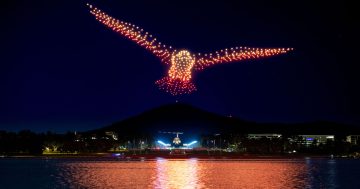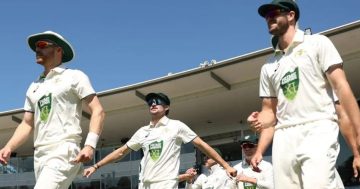Weather permitting, there are some good space viewing opportunities for Canberra people over the next week or so. Planets, stars, the International Space Station, and even a manned Soyuz launch to hunt out.
First, the beautiful morning conjunctions with Jupiter and the very bright Venus continue and even get better. For two weeks now these two planets have been joined by:
- the Pleiades – the Seven Sisters an open star cluster (Messier Catalogue Object 45) to the left of them, but some 391 light years away
- the Hyades open star cluster (Caldwell Catalogue Object 41) 153 light years away
- red giant star Aldebaran (the brightest star in the Zodiac constellation Taurus – being the bull’s eye, at a quite close 75 light years) to the right.
On 9 July, Aldebaran will be right next to Venus, and you may need a telescope to pick them apart due to the brightness of Venus.
By the way, Venus – despite being the brightest thing in our night skies other than the Moon – is currently in a crescent phase just like a new moon, and with just 8% of the Earth-facing side lit by sunlight. A crescent you ask? Yes – remember it was recently right between the Sun and us for the Transit, and completely blacked out. On my blog I have a small screen grab from a video of Venus I took this week – no processing as yet so very rough – as well as some layout guides and other links to details on these features.
On 15 and 16 July, our morning planetary duo will be joined by a New Moon – a little like the conjunction in June but much closer this time.
Most of these sights are easily seen even as late as 6:30am, but a little earlier will let you appreciate the star clusters too – even better with simple binoculars.
Not into the mornings? That’s fine, because Mars and Saturn will put on an evening conjunction show too. They’ve been up there all winter, with some crisp clear Canberra nights giving beautiful viewing. But now due to quirk of orbital differences, Mars and Saturn are growing closer. A couple of days either side of 24 July will see them closest, and with the new Moon joining in. The bright star Spica will be to the top.
But they are setting earlier too, so they won’t be in our skies much longer. If you haven’t nailed a view of Saturn through a telescope then sing out, because you really are missing a beautiful sight that never fails to leave people amazed.
What about space ships? You’re in luck. Over this week,the International Space Station will make a number of early evening transits of our skies. I’ve culled out anything under two minutes or lower than 30 degrees maximum elevation:
| Date | Brightness | Start | Highest point | End | ||||||
| (mag) | Time | Alt. | Az. | Time | Alt. | Az. | Time | Alt. | Az. | |
| 11-Jul | -1.9 | 19:03:39 | 10° | NW | 19:05:42 | 36° | NW | 19:05:42 | 36° | NW |
| 12-Jul | -2.7 | 18:09:54 | 10° | NNW | 18:12:57 | 39° | NE | 18:14:17 | 26° | E |
| 13-Jul | -2.1 | 18:52:11 | 10° | WNW | 18:55:00 | 34° | SW | 18:55:20 | 35° | SSW |
| 14-Jul | -3.2 | 17:57:52 | 10° | NW | 18:01:07 | 76° | SW | 18:03:44 | 15° | SE |
| 16-Jul | -1.9 | 17:46:23 | 10° | W | 17:49:21 | 32° | SW | 17:52:21 | 10° | SSE |
And a special challenge comes in the form of a manned spaceflight launch of a Russian Soyuz craft, which will then cross our skies during the chase-down of the ISS:
| LOCAL | DURATION | MAX ELEV | APPROACH | DEPARTURE |
| DATE/TIME | (MIN) | (DEG) | (DEG-DIR) | (DEG-DIR) |
| Sun Jul 15/05:52 PM | 3 | 48 | 34 above W | 13 above SE |
| Mon Jul 16/06:08 PM | 3 | 18 | 14 above WSW | 11 above SSE |
| Tue Jul 17/06:31 PM | 2 | 11 | 10 above SW | 10 above S |
I can’t find projections of the brightness of the Soyuz, but it will be a lot dimmer than the ISS. The passes low in the sky will be quiet hard to pick up, especially for anyone in North Canberra as we have the compounding problem of the Canberra light pollution to the south.
















